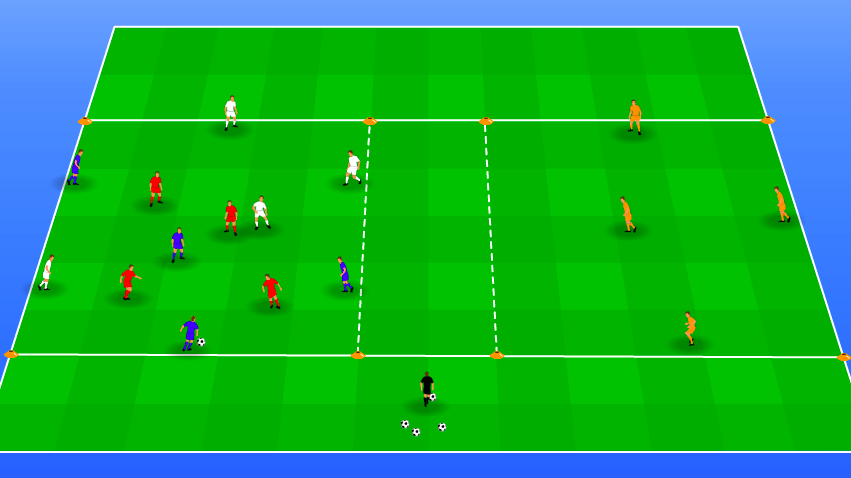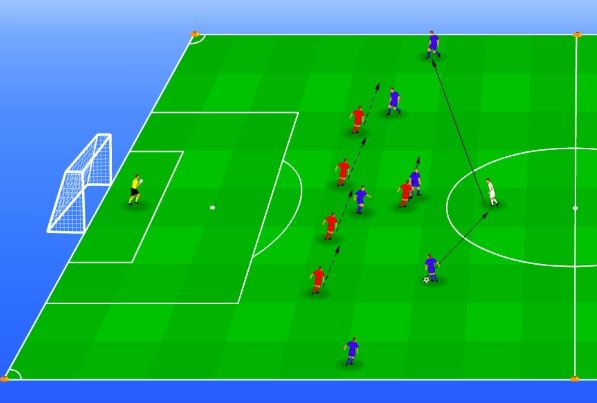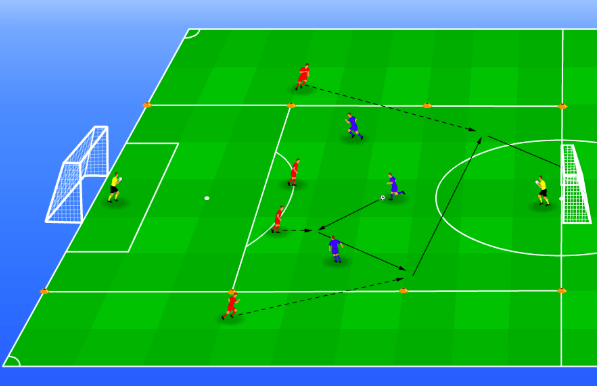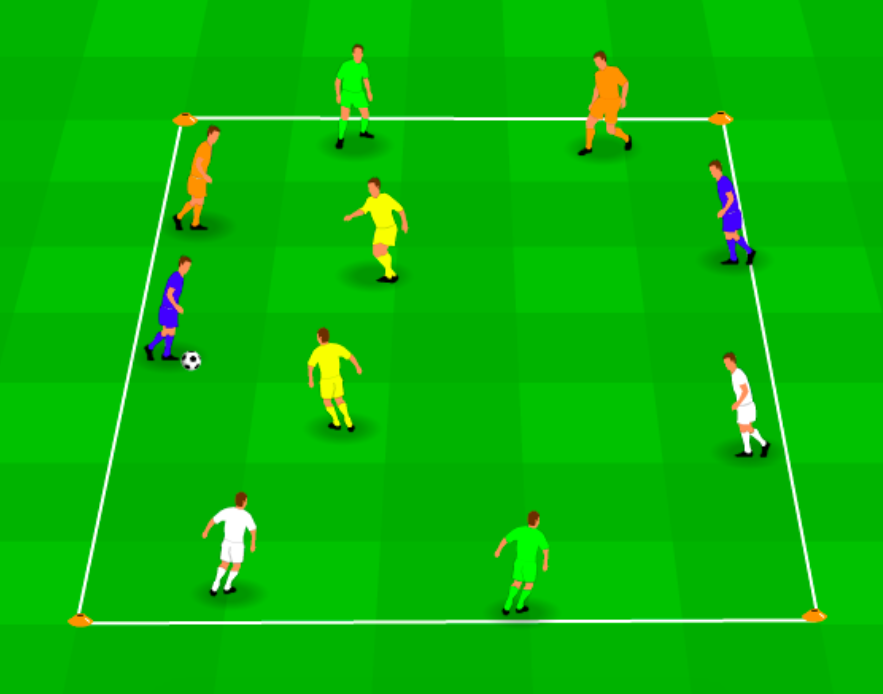Implementing additional transitioning moments into training drills

More and more, football matches are a chain of fast subsequent transitioning moments. Therefore, it is important to implement those transitioning moments in training drills to train as game realistic as possible. How do you add those moments to the drills you currently use?
Obviously, a lot of training drills, such as tactical games and position games, already contain many transitioning moments. But not all drills do. In this article, we will provide several exercises that can get an extra dimension when adding some extra transitioning moments.
Rondo and position game
Let’s start with a rondo, such as 8v2. Usually, when the ball goes out of play or the defenders regain possession, the rondo pauses. Various adjustments can make this drill a little bit more game realistic.
- If the defending duo intercepts the ball, they can score on two small goals just outside of the pitch. When the ball goes out of play, the coach passes the ball to those players. After a goal, they switch with two attackers.
- The defenders can score by two consecutive passes after they regain possession. By adding this rule, the team that loses possession is obligated to transition quickly to prevent the defending duo from playing those two passes.
- When the defenders win the ball, they have to dribble past one of the four sidelines to score. That means the team transitioning from attacking to defending must not only put pressure on the ball, but also defend the sidelines.
- The ten players are divided into five teams of two players (using bibs in four different colors). When the ball is lost, the duo that loses the ball become the defenders. When the ball goes out of play, the coach resumes the position game. This rondo was used by former Everton coach Marco Silva.
Attacking drill 7v5 + GK
The most suitable drills to add transitioning moments to are attacking drills. A good example is a 7v5 + GK at half a pitch, a drill that is mostly used to improve the co-operation between the goalkeeper and the defenders. The option to score after regaining possessions, adds a lot of vivacity and spirit to the drill.
This option can be offered by putting a large goal without a goalkeeper or two or three small goals on the half-way line. Another option is to change one attacking player for a neutral player who starts the build-up from within the centre circle. He stays there and will be the striker of the defending team after they win the ball.

Attacking drill 3v2 + GK
A lot of coaches use (variations of) the attacking drill 3v2 + GK. The three attackers receive the ball and try to score on a large goal. There are several ways to make sure the defenders can score after they win the ball.
- One of the three attackers is a neutral player. When the attack is ended (after a goal or when the ball is out of play) the same drill starts, but now in the other direction with the neutral player assisting the other team. The defenders become attackers and vice versa.
- After the attack ends, the coach inserts a second ball. After a goal or a ball that went out of play via the defenders, the three attackers get this second ball. If the ball was last touched by an attacker, the defenders get the ball. They can score on several small goals on the half-way line.
- After a change of possession (such as an interception or a ball that goes out of play by an attacker) two new players enter the field and participate in the counterattack. This way, a 3v2 + GK becomes a 4v3 + GK in the other direction.

Transitioning moments
In short, implementing additional transitioning moments can be done in several ways.
- The coach adds a second ball after a goal or when the ball is out of play.
- The defending team can score on one or several goals after regaining possession.
- A neutral player assists the other team after a change of possession.
- In transition, players are added to start a counterattack with extra numbers.
- The defenders can score after they win the ball by dribbling past a certain line.
